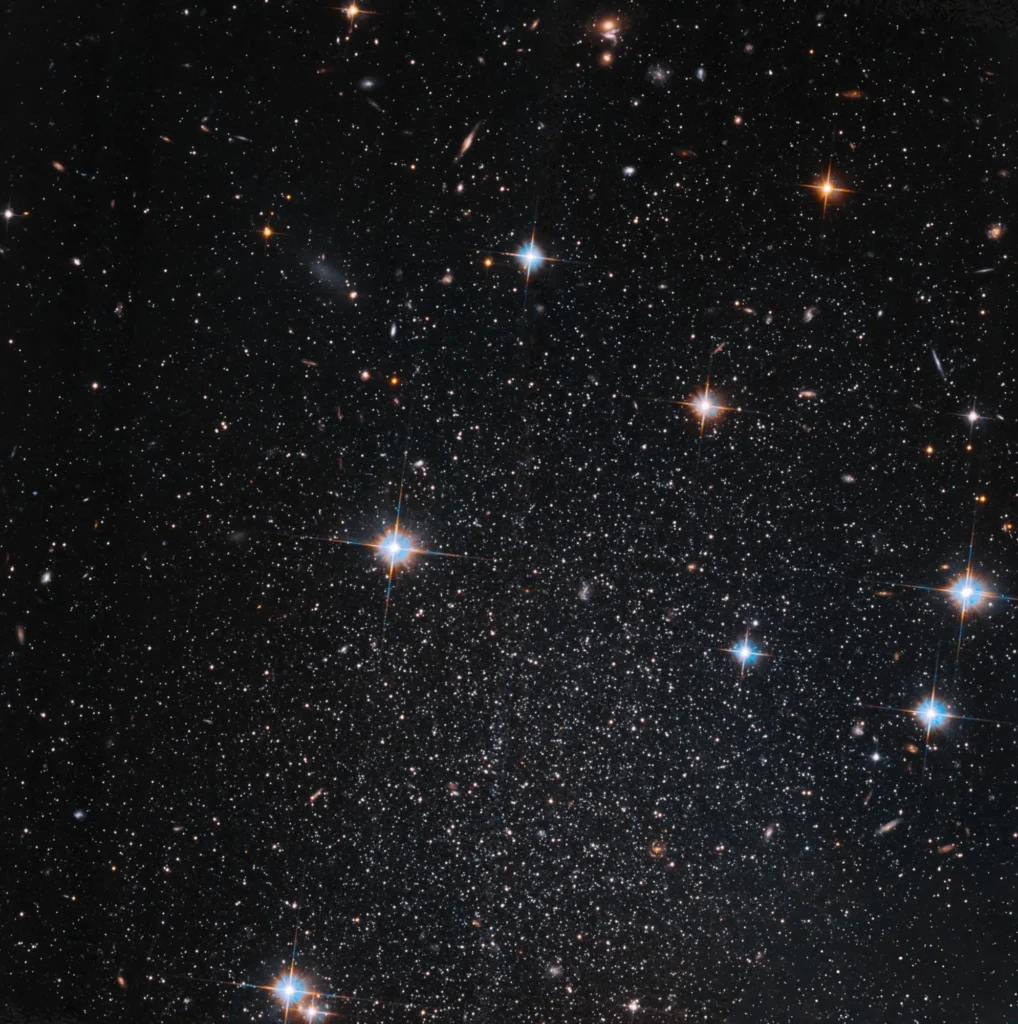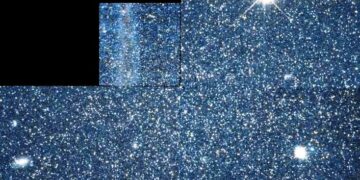The Hubble Space Telescope has once again peered into the depths of our universe, revealing a hidden gem: the Pegasus Dwarf Spheroidal galaxy, also known as Andromeda VI. This faint, starry mini-galaxy orbits the Andromeda galaxy, one of the Milky Way’s closest galactic neighbors. Although dim and unassuming, this dwarf galaxy holds clues to some of the most profound questions in astronomy, including the mysteries of dark matter, galaxy formation, and the evolution of cosmic ecosystems. Let’s dive into the science behind this discovery and explore why the Pegasus Dwarf Spheroidal galaxy is so important.
What is the Pegasus Dwarf Spheroidal Galaxy?
The Pegasus Dwarf Spheroidal galaxy is one of the least massive and dimmest galaxies known, making it a perfect example of a dwarf spheroidal galaxy. These mini-galaxies are typically characterized by their elliptical shapes and smooth star distributions. They contain little to no gas, which means they lack the raw material necessary for ongoing star formation, and they are predominantly made up of old and intermediate-age stars. The Pegasus Dwarf Spheroidal, discovered in 1998, orbits the much larger Andromeda galaxy, which itself hosts at least 13 such dwarf galaxies.
Unlike many other dwarf spheroidal galaxies, Pegasus has slightly more heavy elements and traces of gas, though still not enough to sustain continuous star formation. Researchers suspect that Andromeda’s massive gravitational pull may have stripped the star-forming gas from Pegasus, leaving it barren and unable to create new generations of stars. This gravitational stripping process is a critical piece of the puzzle, as it highlights the dynamic interactions between large galaxies and their smaller companions.
The Formation Mystery of Dwarf Spheroidal Galaxies
The exact formation mechanisms of dwarf spheroidal galaxies like Pegasus remain a topic of active research. Several theories attempt to explain how these faint galaxies came to be, including collisions between larger galaxies that fragment smaller pieces, gravitational influences from massive galaxies, and processes involving dark matter. Some suggest that dwarf spheroidal galaxies might form from small, disk-shaped dwarfs that are gradually stripped of their gas and reshaped by the gravitational forces of their larger neighbors.
In the case of Pegasus, scientists believe that Andromeda’s extended gravitational field has played a significant role in shaping the galaxy’s current state. Unlike some of the dwarf companions of the Milky Way, which still contain intermediate-age stars, Pegasus appears more depleted of star-forming material, suggesting a stronger influence from Andromeda. This difference offers valuable insights into how large galaxies like Andromeda can alter the evolution of their smaller companions over time.
Why Is This Discovery Important?
Hubble’s observation of the Pegasus Dwarf Spheroidal galaxy is not just about cataloging another cosmic object—it’s about understanding the broader narrative of galaxy formation and evolution. Studying dwarf galaxies like Pegasus helps astronomers explore critical questions about the nature of dark matter, reionization, and the complex interactions that shape galaxies across cosmic time. These faint galaxies serve as laboratories for understanding how gravitational forces can sculpt the universe on both large and small scales.
Dark matter, an invisible and mysterious substance that makes up most of the universe’s mass, is a key player in the formation of galaxies, including dwarfs. By examining how dwarf spheroidal galaxies interact with larger systems, astronomers hope to glean insights into the distribution and behavior of dark matter. Pegasus and other similar galaxies are thought to be embedded in dark matter halos, and their study could provide clues about how this elusive material influences galaxy formation and dynamics.
Moreover, dwarf spheroidal galaxies offer a window into the early universe. Since they often lack new star formation, their stellar populations tend to be ancient, preserving a record of the conditions in the universe billions of years ago. By studying these stars, researchers can piece together a timeline of galactic evolution, including how the earliest structures formed in the aftermath of the Big Bang. The Pegasus Dwarf Spheroidal galaxy, with its old stars and stripped-down structure, provides a glimpse into this ancient history, helping us understand how galaxies grow and change over time.
The Role of Hubble in Unveiling Galactic Mysteries
Hubble’s ability to observe faint, distant objects like Pegasus has been pivotal in expanding our knowledge of the universe. As one of the most powerful space telescopes ever built, Hubble has spent decades capturing detailed images and data that have revolutionized our understanding of cosmic evolution. The telescope’s observations of the entire Andromeda system, including its satellite galaxies, are part of a broader effort to explore how galaxies interact, evolve, and contribute to the larger galactic ecosystem.

NASA, ESA, and D. Weisz (University of California – Berkeley); Processing: Gladys Kober (NASA/Catholic University of America)
The Hubble Space Telescope’s study of the Andromeda system’s satellites aims to investigate how these small galaxies have been shaped by their larger neighbor. By examining the detailed structures and star populations of these satellites, including Pegasus, Hubble helps astronomers answer big questions about galaxy formation, the influence of dark matter, and the environmental factors that drive galactic change. This research is crucial not just for understanding Andromeda and its satellites but also for drawing parallels with the Milky Way and other galaxies in the universe.
Looking Ahead: What’s Next for Studying Dwarf Galaxies?
As astronomers continue to unravel the mysteries of dwarf spheroidal galaxies, future missions will build on Hubble’s legacy, probing even deeper into the cosmos. The upcoming James Webb Space Telescope (JWST) will complement Hubble’s findings by providing even more detailed infrared observations of faint galaxies like Pegasus. JWST’s capabilities will allow astronomers to study these galaxies with unprecedented precision, exploring their stellar populations, dark matter content, and potential clues about their formation.
Understanding galaxies like Pegasus is not just about looking back in time—it’s about refining our models of the universe’s most fundamental processes. As we continue to explore these dim, starry mini-galaxies, each discovery adds a new piece to the cosmic puzzle, helping us comprehend how the universe has grown and evolved over billions of years. The Pegasus Dwarf Spheroidal galaxy, though small and faint, plays a significant role in the grand tapestry of galactic evolution, offering insights that extend far beyond its humble appearance.
Conclusion: A Window into the Universe’s Past and Future
The Pegasus Dwarf Spheroidal galaxy is more than just a small collection of stars—it’s a crucial piece of the cosmic story that helps us understand the forces shaping our universe. From the mysteries of dark matter to the complex interactions between galaxies, the study of Pegasus and other dwarf spheroidal galaxies provides valuable insights into the nature of the cosmos. As we continue to observe these faint galaxies with Hubble, JWST, and future telescopes, we’ll deepen our understanding of how galaxies form, evolve, and interact, shedding light on the intricate and beautiful mechanics of the universe.
This article highlights the importance of Hubble’s discovery and explains how studying dwarf spheroidal galaxies like Pegasus contributes to our broader understanding of galactic evolution and the universe itself.
Reference:
Weisz, D. R., Skillman, E. D., & Colleagues. (2024). “Characterizing the Pegasus Dwarf Spheroidal Galaxy: Insights into the Formation and Evolution of Andromeda’s Satellite Galaxies.” The Astrophysical Journal.



















